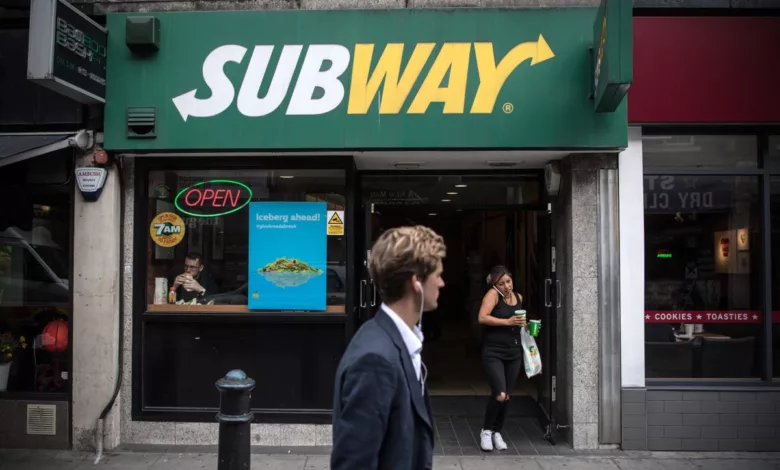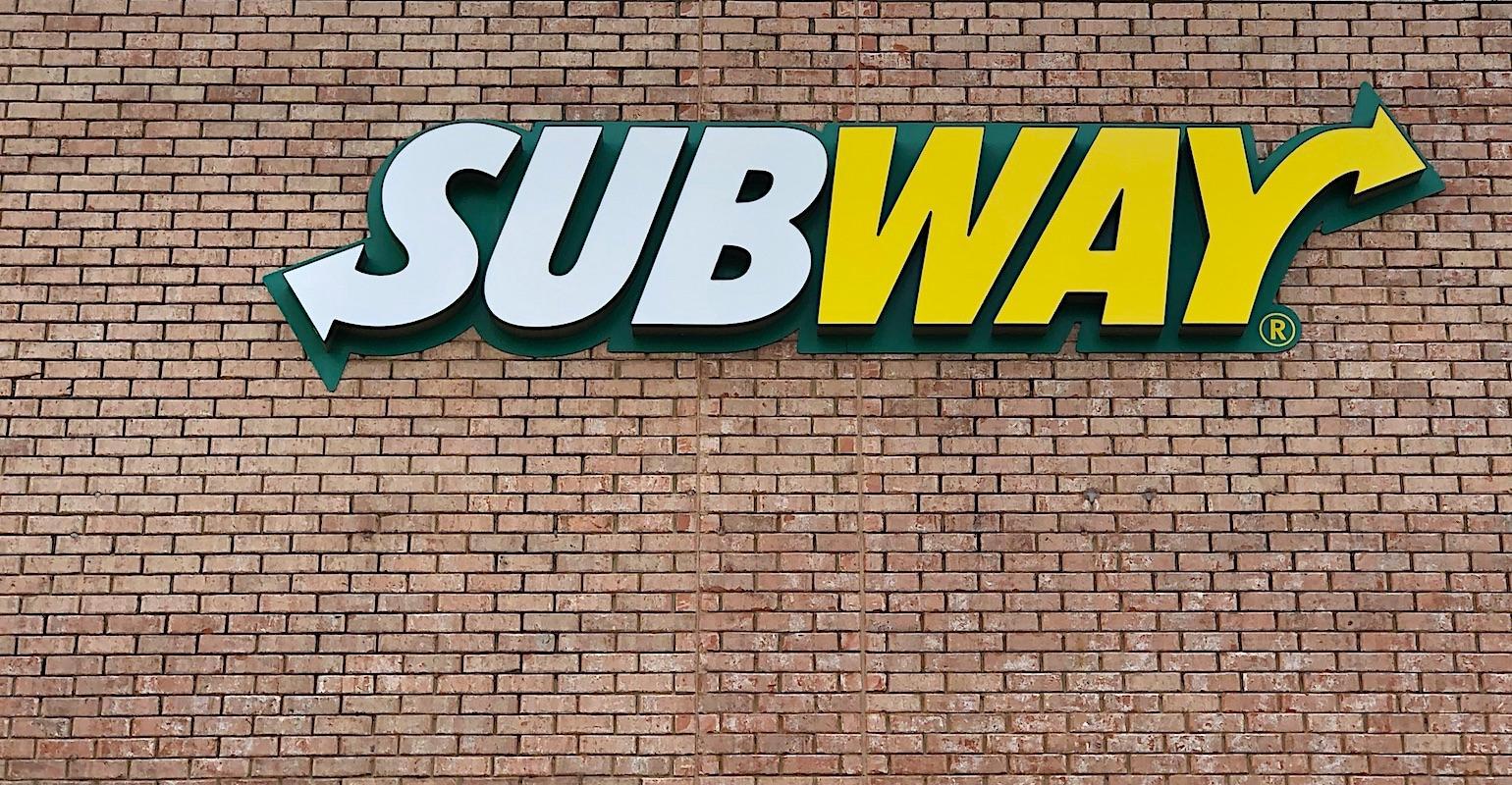Subway’s Potential $10 Billion Sale Gets Bids From Goldman, Bain: Report
According to information obtained by Sky News, Goldman Sachs Asset Management (GSAM) is one of at least a few parties who submitted preliminary bids for Subway this week.

The global sandwich business Subway has been placed up for sale with an estimated $10 billion price tag, and one of the potential buyers is an affiliate of Wall Street titan Goldman Sachs. According to information obtained by Sky News, Goldman Sachs Asset Management (GSAM) is one of at least a few parties who submitted preliminary bids for Subway this week.
Sources familiar with the matter stated that TPG, Bain Capital, and TDR Capital—which jointly owns Asda and the massive EG Group of gas stations—had also expressed interest. Brewdog is one of the investments made by TSG Consumer Partners, which was also keeping an eye on the issue.
Some weeks after the family-run sandwich shop revealed it was considering selling, a list of prospective purchasers for Subway has come to light. Nuclear physicist Peter Buck opened the first Subway restaurant in Connecticut in 1965. With 37,000 locations—mostly franchised—in more than 100 countries since then, it has grown to become one of the largest quick-service restaurant chains worldwide.
Popularity Of Subway
Subway offers made-to-order salads, wraps, and sandwiches throughout the UK at more than 2,000 locations. Compared to rivals like McDonald‘s and Greggs, it has more locations in Britain. Some weeks after the family-run sandwich shop revealed it was considering selling, a list of prospective purchasers for Subway has come to light. Nuclear physicist Peter Buck opened the first Subway restaurant in Connecticut in 1965.

With 37,000 locations—mostly franchised—in more than 100 countries since then, it has grown to become one of the largest quick-service restaurant chains worldwide. Subway offers made-to-order salads, wraps, and sandwiches throughout the UK at more than 2,000 locations.
According to reports, a number of potential bidders have expressed interest, and JP Morgan bankers are overseeing the selling process. While a takeover at $10 billion would be too enormous for some of the early bidders to execute on their own, they may decide to team up with one another. The idea that Goldman has surfaced as a potential bidder for Subway is intriguing given the fact that it participates in so few auctions of this nature.
Through a GSAM subsidiary that was once known as its Primary Investment Area, it channels its interest (PIA). TDR has experience in the sector as the owner of a number of food-service businesses, but Bain was one of the suitors when Boots’ owners attempted an unsuccessful sale last year.
Goldman Sachs – An American Investment Bank
Goldman Sachs is an American worldwide investment bank and financial services provider. Goldman Sachs was established in 1869 and has its main office at 200 West Street in Lower Manhattan. The 57th-largest American corporation on the Fortune 500 list and the second-largest investment bank in the world by revenue is Goldman Sachs.
The company has drawn criticism for having inadequate ethical standards, conducting business with despotic countries, keeping strong ties to the US government through a “revolving door” of former workers, and engaging in commodity futures speculation to inflate prices artificially. Even though the company made Fortune’s list of the 100 Best Companies to Work For, its employees have criticized it for its 100-hour work weeks, high levels of employee dissatisfaction among first-year analysts, abusive treatment by superiors, a lack of resources for mental health, and extremely high levels of stress at work that cause physical discomfort. This is largely due to the high compensation levels at the business.

The company finances and invests in startups, and oftentimes the companies’ initial public offerings (IPOs) result in the acquisition of new clients. Goldman Sachs served as the lead bookrunner for several notable initial public offerings, including those of Twitter, Bumble, and Robinhood Markets. Among the startups in which the business or its funds have invested are Spotify, Foodpanda, and Dropbox. It belongs to the World Economic Forum’s partner network.
After focusing on serving institutional investors, corporations, and governments for the majority of the previous 150 years, Goldman Sachs began to enter the consumer financial market in 2016. A direct bank, GS Bank, was introduced by Goldman Sachs in April of 2016.
Dollar, a digital retirement savings programme created by American entrepreneur Whurley, and geared on assisting small-business employees and self-employed people access cheap retirement plans, was acquired by Goldman Sachs in March 2016. The agreement’s terms weren’t made public.
During the 2017 Venezuelan protests, Goldman Sachs bought $2.8 billion worth of PDVSA 2022 bonds from the Central Bank of Venezuela. A personal finance firm called Clarity Money was purchased by Goldman Sachs in April 2018.
For $3 billion, on September 10, 2018, Goldman Sachs purchased Boyd Company from Genstar Capital. United Capital Financial Advisors, LLC was acquired by Goldman Sachs on May 16, 2019 for $3 billion. Apple, Inc. declared in March 2019 that it would collaborate with Goldman Sachs to introduce the Apple Card, the bank’s first credit card product. The card has a variety of consumer-friendly features, such as no fees, software that motivates users to avoid debt or pay it off fast, the lowest interest rate range for comparable cards in the industry, and a requirement to accept as many iPhone users as feasible.
Due to the perceived risk associated with implementing these features, other banks with established consumer credit card businesses, such as Apple’s longtime partner Barclays, Citigroup, JPMorgan Chase, and Synchrony, declined Apple‘s proposal. While defending the conditions of the agreement, Goldman Sachs stated that it was “thrilled” with the cooperation and sought “to disrupt consumer finance by putting the customer first.
The development and demise of Subway
The previous several years have seen Subway restaurants contend with growing pains, diminishing sales, and a PR issue with its former spokesperson, Jared Fogle, who is also facing legal issues. As a result, over the past few years, the sandwich chain has closed hundreds of locations across the US.
But things haven’t always been this way. Subway saw remarkable growth over the 1980s, 1990s, and early 2000s, growing to become the largest fast-food chain in the world. In 1965, Peter Buck, a nuclear physicist, and Fred DeLuca, a college student, opened Pete’s Super Submarines in Bridgeport, Connecticut. The store sold 312 sandwiches for less than $1 each on opening day.
The two founders changed the name of the establishment to Subway in 1968, and by 1974 the business had 16 locations across Connecticut. With 100 additional sites opening the following year, Subway has 200 outlets in the US by 1981. The Largest, Meatiest, and Tastiest sandwich (BMT) and the Snak, which later evolved into the six-inch sandwich we know today, were the chain’s two most popular sandwiches at the time. Because it was extremely simple to own a Subway franchise, the business expanded rapidly in the 1980s and 1990s.
One of the least expensive franchise brands is Subway. To operate a Subway, you need between $116,000 and $263,000 in funding. For instance, opening a McDonald’s costs anywhere from $1 million to $2.2 million. As a result, Subway rapidly expanded both domestically and internationally. In 1990, Subway built its 5,000th restaurant as the company concentrated on setting up franchisees in unconventional locations.
Subway opened eateries in convenience stores, truck stops, rest areas, and even gas stations. It was able to fast spread thanks to its “anywhere and everywhere” mentality. Weight loss and good health were top concerns in the 1990s and the early 2000s, so Subway promoted itself as a healthier option.
Although Subway has long promoted itself as a healthy fast-food choice, the firm started to stress its health benefits as the nation got more and more obsessed with diets. In 1997, Subway launched a marketing campaign that highlighted its seven low-fat sandwiches and contrasted them with the fatty burgers and tacos offered by other fast-food restaurants. Subway, which surpassed McDonald’s in terms of restaurant locations in the US in 2002, did so by capitalising on Americans’ priorities.
Jared Fogle, who claimed to have dropped over 200 pounds by eating Subway, appeared in another health-focused advertisement launched at the same time by the sandwich chain. Jared Fogle, who said he formerly weighed 425 pounds but lost almost 200 of them by eating Subway sandwiches, was first introduced to the US by Subway in 2000. In advertisements, Fogle frequently appeared holding up his old jeans to display how much weight he has shed.
After the first commercial, sales increased by 20% since the campaign was so effective. Many US consumers prioritised their budgets during the 2008 crisis, thus Subway concentrated their marketing efforts on the $5 footlong. Using a catchy tune, Subway launched a new “$5 footlong” campaign in response to the popularity of Fogle’s advertisements. Many American customers wanted more affordable food options, therefore the campaign was created in response. Sales for the business topped $11.5 billion in 2011.
But in 2014, everything started to alter. As consumers’ satisfaction levels decreased that year, Subway’s sales began to decline. Sales at Subway fell by 3% in 2014, and competition from restaurants like Panera, McDonald’s, Jimmy John’s, and Potbelly didn’t help. At the same time, Subway’s extensive network of stores unexpectedly started to cause issues.
Subway expanded far too quickly. The business concentrated on the number of restaurants rather than the location. As a result, eateries started opening up just a few blocks apart, leading to competition within the same business.
Franchisee with two locations: “I feel their focus ten years ago was about opening up sites,” said franchisee. One of the company’s founders, Fred DeLuca, “was preoccupied with having the most locations, and he succeeded. People opened up to us on all sides. There was undoubtedly a problem there”.

When Fogle, the former spokesperson for the firm, admitted to having sex with children and disseminating and receiving child pornography in 2015, Subway suffered a severe setback. In December 2015, he received a sentence of nearly 16 years in jail. By removing any references to Fogle from its website and social media pages, Subway severed all relations with him right away. For the first time ever, Subway closed more locations than it opened in 2016. Sales decreased from $11.5 billion in 2015 to $11.3 billion in 2016. The corporation responded by closing 359 facilities across the globe.
The firm closed 1,108 Subway stores in the US in 2018, continuing the pattern. The corporation announced its plans to close 500 outlets in 2018 at the beginning of the year. It really closed more than it had anticipated. In the US, Subway now has 24,008 locations.
edited and proofread by nikita sharma





